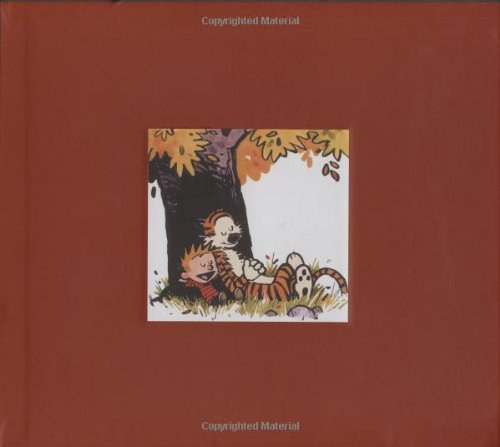
Indian Esoteric Buddhism
书刊介绍
内容简介
Despite the rapid spread of Buddhism the historical origins of Buddhsit thought and practice remain obscure.This work describes the genesis of the Tantric movement and in some ways an example of the feudalization of Indian society. Drawing on primary documents from sanskrit, prakrit, tibetan, Bengali, and chinese author shows how changes in medieval Indian society, including economic and patronage crises, a decline in women`s participation and the formation of large monastic orders led to the rise of the esoteric tradition in India.
作品目录
Maps and Illustrations ixPreface xi
Acknowledgments xv
Pronunciation and Orthographic Guide xvii
1 Introduction: A Plethora of Premises 1
Habits of the Heart, Deductive Premises, and Buddhist
Inhibitions 7
Petrarch’s Method: Artes Historicae in the Renaissance 15
Tropes, Heuristics, and Other Dangerous Things 22
2 Prayers in the Palace, Swords in the Temple:
Early Medieval India 25
The Occlusion of the Medieval 26
Early Medieval Political and Military Events 30
The Culture of Military Opportunism 62
Aesthetics and the Apotheosis of Kingship 68
Feudalization of Divinity 71
Conclusion: Early Medieval Vitality 74
3 The Medieval Buddhist Experience 75
Guilds, Commerce, and Political Legitimacy 77
Politics, Patronage, and Ethics—The Loss of Kuntala
and Andhrapatha 83
Medieval Women’s Buddhism—Hidden from View or
Missing in Action? 91
Contents
A Loss of Footing: The Agenda of Skepticism 99
Looking Elsewhere for Direction: The Turn to Epistemology 102
Big Important Monasteries—Administrators in Maroon Robes 105
Conclusion: A Tradition Under Duress 111
4 The Victory of Esoterism and the Imperial Metaphor 113
Chronology: The Seventh-Century Beginning 116
Becoming the Rajadhiraja—The Central Mantrayana Metaphor 118
Mandalas and Fields of Plenty 131
Becoming the Institution 144
Monks and Their Rituals 153
Sacralization of the Domain 160
Conclusion: Esoteric Buddhism as Sacralized Samanta
Feudalism 166
5 Siddhas and the Religious Landscape 169
Some Siddha Social Models 171
First Moments in Siddha Identity 173
saiva and sakta Ascetic Orders 177
Marginal Siddha Topography 187
Religious Relations: The Agonistic Landscape 191
Buddhist Siddhas and the Vidyadharas 194
Chronological Concerns and saiva Exchanges 202
Indian Sacred Geography 206
Siddha Divinities—Bhairava and Heruka 211
Kapalika-Buddhist Conversions 217
The Other Saivas: The Pasupatas 218
Siddhas in the Tribal Landscape 224
Conclusion: A Complex Terrain 233
6 Siddhas, Literature, and Language 236
Regional Towns and the Lay Siddha 237
The Hidden Scriptures 239
From Transmission to Reception 245
The Buddha’s Talking Skull Excites Women, Kills Snakes,
and Belches a Book 247
Everything You Know Is Wrong 252
The Magic Decoder: The Construct of Coded Language 257
VI ⁄ CONTENTS
Coded Language as Secret Ritual Words 262
Secret Sacred Sociolinguistics 269
Extreme Language and Comedy in the Tantras 277
Conclusion: The Literature of Perfection 290
7 Siddhas, Monks, and Communities 293
Siddha Mandalas, Circles of Goddesses 294
Siddhas in a Circle, Siddhas in a Line, Siddhas in a Mob 303
Hagiographical Communities: Buddhajñanapada’s Travels 309
Gatherings and Ganacakras—The Ritual Community 318
Rules of Order 322
Self-Criticism and Correction 327
The Imperial Metaphor Reconsidered:
Becoming the Vidyadhara-Cakravartin 330
Conclusion: It’s a Siddha’s Life 334
8 Conclusion:The Esoteric Conundrum 336
Appendix:
Probable Pasupata Sites 341
Glossary 345
Notes 349
Abbreviations 417
Bibliography 419
Indic and Ostensibly Indic Tibetan Sources 419
Chinese Sources 434
Indigenous Tibetan Sources 435
Archaeological and Epigraphic Materials 438
General Modern Sources 444
· · · · · ·
相关推荐
-
![[日] 玉树真一郎《心想事成的创意整理术》](http://oss.shudanhao.com/caiji/chazidian/2023/18059.jpg)
[日] 玉树真一郎《心想事成的创意整理术》
超级电玩任天堂Wii的创意是怎么产生的?——企划人希望开发一款全家老少可以一起玩、开心得像在家里吃火锅那样的游戏产品!但是,
-

宋翔《Word排版之道》
Word排版之道(第2版双色),ISBN:9787121158858,作者:宋翔著作者简介 宋翔,微软全球最有价值专家(MVP),微软中文技术论坛O
-

对立之美
《对立之美:西方艺术 500 年》把以往深奥、晦涩的西方艺术史 “ 翻译 ” 成人人都能听得懂、记得住、用得上的知识资产。把艺术家、艺术品所处年代的社会背景打通...
-

安娜·卡列尼娜
《安娜·卡列尼娜》是托尔斯泰第二部里程碑式的长篇小说,创作于 1873—1877年。作品由两条既平行又相互联系的线索构成:一条是安娜与卡列宁、伏伦斯基之间的家庭...
-

他来了,请闭眼
丁墨:网络超人气作家,其作品文思巧妙大胆,以独特的甜宠悬爱风格自成一脉。2012年因《枭宠》一举成名,2013年凭借《如果蜗牛有爱情》备受瞩目,多次蝉联网站积分...
-

网络心理学
玛丽•艾肯博士,著名刑事科学法医心理学家,网络心理学研究中心的主任、欧洲刑警组织顾问,曾与国际刑警组织(INTERPOL)、联邦调查局(F.B.I.)和白宫下设...
-

爵士笔记
菲利普•拉金(1922-1985)不仅是20世纪最重要的英语诗人之一,也是一位出色的小说家和爵士乐评论家,他于1961-1971间担任《每日电讯报》的爵士乐评论...
-

21天搞定电影剧本(修订版)
最简要、最实用的编剧指南好莱坞圈内编剧的行业标准书【编辑推荐】★帮助你在21天之内写出带有你个人印记的独特剧本!★用最简要、最实用的文字写成的编剧指南,好莱坞圈...
-

北风遗忘的手绢
安房直子(1943-1993),日本著名童话作家,生于东京,日本女子大学国文科毕业。1969年发表成名作《花椒娃娃》,获第三届日本儿童文学者协会新人奖,从此走上...
-

亲密关系
罗兰·米勒(Rowland S. Miller),美国萨姆休斯顿州立大学心理学教授,1973年获康奈尔大学心理学学士学位,分别于1976年和1978年获佛罗里达...
-

用药杂谈
用药杂谈 本书特色 《用药杂谈》:当今中医式微,网络上有少数人掀起一波又一波的反中医言论;当今中医西化严重,很多传统的中医道术已经失传。华夏中医论坛作为专业的中...
-

真实与虚拟
这是一个后真相时代,我们对于何为真实的判断暧昧晦暗。现代社会庞大的信息数据网络,除了如同迷魂阵令人难辨真假,也如同牢笼将我们封锁其中。回顾来路,20世纪的变革既...
-

当代心理治疗
《当代心理治疗》首次出版于1973年,经过近半个世纪的精心打磨,已成为美国高校使用时间最长、使用范围最广的心理咨询与治疗经典教材。本书从纷繁复杂的心理咨询与治疗...
-

中药饮片标准图鉴
中药饮片标准图鉴 本书特色 本书共收载2010年版《中国药典》中以植物为基原的饮片484味。本书依药名笔画排序,介绍来源、产地、采收加工、药材性状、炮制规范、饮...
-

科学与宗教引论/世纪前沿
麥格夫(Alister E. McGrath)是英國牛津大學威克里夫學院院長,牛津大學神學系研究講師,著作甚豐,有《今日基督教教義》、《追尋真理的激情》、《基督...
-

黑格尔新释
刘创馥,男,香港中文大学讯息工程学学士(1995),哲学硕士(1997),德国海德堡大学哲学博士(2002),德国洪堡特基金会学人(2003-2004)。200...
-

股票操盘手之超级短线交易手册
《股票操盘手之超级短线交易手册》内容简介:在国内目前的资本市场环境下,超级短线交易已成为广大股民的最爱。针对当下国内股市形
-

在你身边,为你设计
本书是腾讯核心部门之一CDC的设计经验总结和分享,并含有常规的交互设计、用户体验方面的设计法则,图文并茂,展现交互、视觉、用户体验设计的结合,体现当今着重体验的...
-

毛泽东传
应该怎样认识毛泽东?毫无疑问,这是中国乃至世界历史上一位独一无二的军事家、战略家、政治家、革命家、思想家,也是一位颇有文采的诗人。我们承认人无完人,但在一味指责...
-

Bureaucracy
★ 我们时代的韦伯★ 美国政治科学协会主席★ 提出“破窗理论”的公共管理权威★ 加州大学洛杉矶分校、哈佛大学的教授★ 1990年,美国政治科学学会詹姆斯•麦迪逊...





